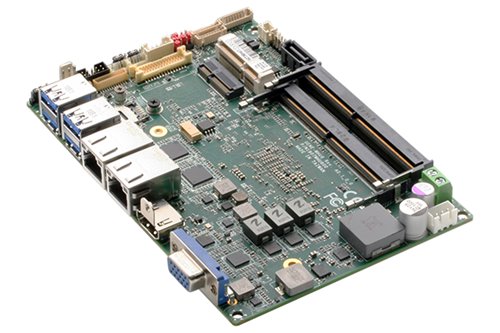Recent Posts
3.5" SubCompact Board With 8th Generation Intel® Core™ i7/i5/i3/Celeron® Processor SoC
Posted by on
AAEON, a designer and manufacturer of advanced industrial and embedded computing platforms, introduced its GENE-WHU6 subcompact board, powered by 8th Generation Intel Core processors. Despite its size, the board provides extended functionality, and it can deliver the versatility of a desktop system.
GENE-WHU6 fuses processing power with up to 32GB of DDR4 SODIMM RAM for computing performance.
Designed for functionality, the GENE-WHU6 provides a complement of I/O features, including four USB 3.2 Gen 2 ports, two Gigabit Ethernet ports, and up to two COM ports supporting RS-232/422/485. The GENE-WHU6 also comes with flexibility regarding display ports, featuring HDMI 2.0, VGA, and LVDS. Users can make use of the expandability of the GENE-WHU6 with a full-sized mPCIe slot, and two M.2 slots (one 2280 B Key and one 2230 E Key). The GENE-WHU6 supports AI accelerator modules, such as AAEON’s Kneron KL520 NPU modules or the AI Core X family featuring Intel Movidius Myriad X.
The GENE-WHU6 is built to power embedded applications wherever they apply. Designed for harsh conditions, the GENE-WHU6 supports a voltage input of 9 to 36VDC, as well as an operating temperature range of 0°C to 60°C. In combination with its 3.5” form factor, the GENE-WHU6 can operate almost anyplace to control applications such as Smart Manufacturing and Intelligent Safety and Security.
Features
- Intel® Core™ i7/i5/i3/Celeron Processor SoC
- Non-ECC DDR4 SODIMM Slot x 2, up to 32GB
- LVDS/eDP x 1 (Default: LVDS), VGA x 1, HDMI 2.0 x 1
- GbE x 2, SATA III x 1, DIO x 8bit
- USB 3.2 Gen 2 x 4 (Up to Gen 2), RS-232/422/485 x 2
- Full size mSATA/mPCIe Slot x 1 (With Nano-SIM)
- M.2 2280 B key x 1, M.2 2230 E key x 1
- Wide DC Input 9-36V (Optional: 12V Only)
Software Development for Embedded Multi-core Systems: A Practical Guide Using Embedded Intel Architecture
The multicore revolution has reached the deployment stage in embedded systems ranging from small ultra mobile devices to large telecommunication servers. The transition from single to multicore processors, motivated by the need to increase performance while conserving power, has placed great responsibility on the shoulders of software engineers.
In this new embedded multicore era, the most demanding task is the development of code to support more sophisticated systems. This book provides embedded engineers with a solid grounding in the skills required to develop software targeting multicore processors.
Within the text, the author undertakes an in-depth exploration of performance analysis and a close-up look at the tools of the trade. Both general multicore design principles and processor-specific optimization techniques are revealed.
Detailed coverage of critical issues for multicore employment within embedded systems is provided, including the Threading Development Cycle, with discussions of analysis, design, development, debugging, and performance tuning of threaded applications.
 Loading... Please wait...
Loading... Please wait...


